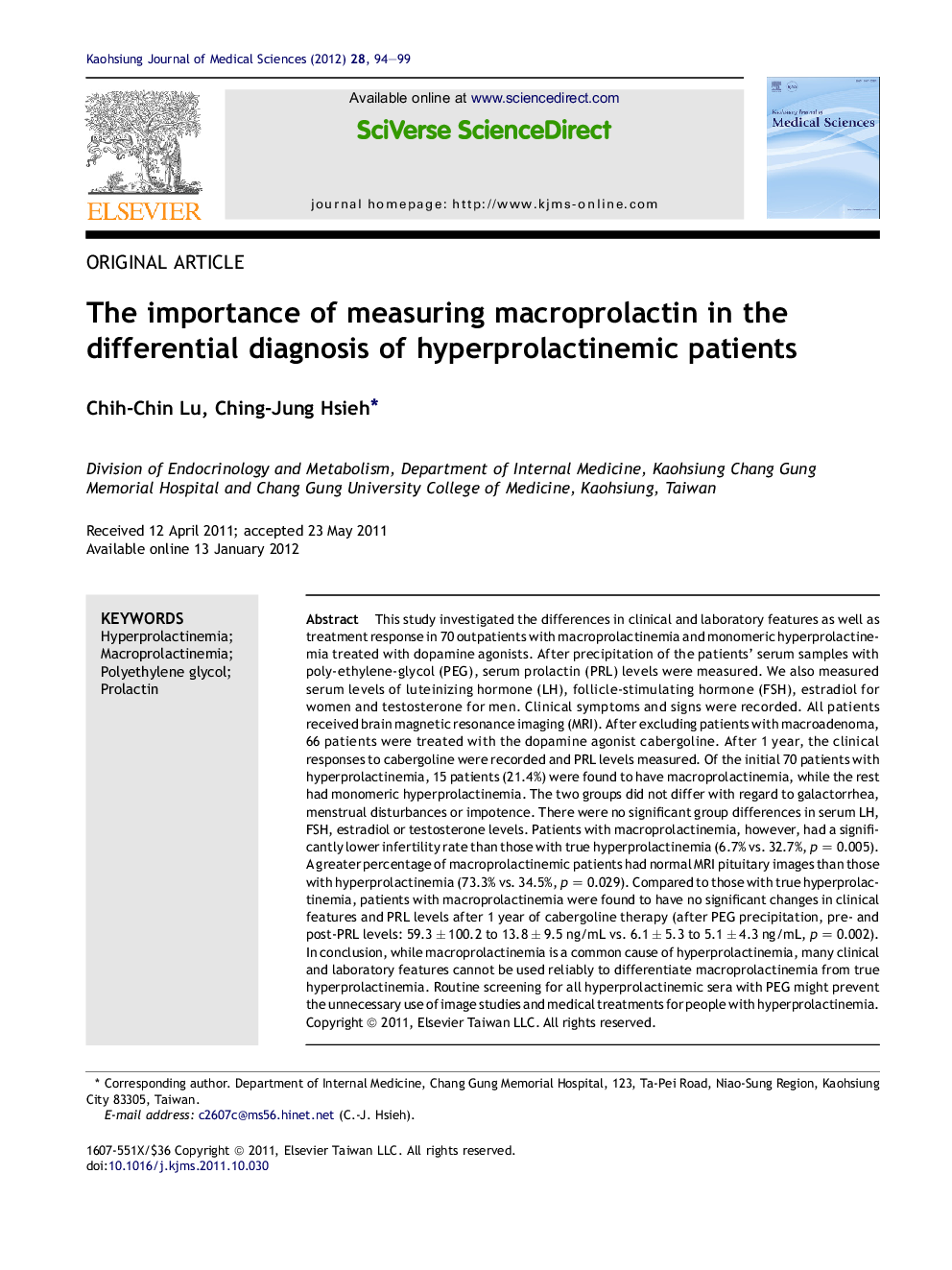| Article ID | Journal | Published Year | Pages | File Type |
|---|---|---|---|---|
| 3485871 | The Kaohsiung Journal of Medical Sciences | 2012 | 6 Pages |
This study investigated the differences in clinical and laboratory features as well as treatment response in 70 outpatients with macroprolactinemia and monomeric hyperprolactinemia treated with dopamine agonists. After precipitation of the patients’ serum samples with poly-ethylene-glycol (PEG), serum prolactin (PRL) levels were measured. We also measured serum levels of luteinizing hormone (LH), follicle-stimulating hormone (FSH), estradiol for women and testosterone for men. Clinical symptoms and signs were recorded. All patients received brain magnetic resonance imaging (MRI). After excluding patients with macroadenoma, 66 patients were treated with the dopamine agonist cabergoline. After 1 year, the clinical responses to cabergoline were recorded and PRL levels measured. Of the initial 70 patients with hyperprolactinemia, 15 patients (21.4%) were found to have macroprolactinemia, while the rest had monomeric hyperprolactinemia. The two groups did not differ with regard to galactorrhea, menstrual disturbances or impotence. There were no significant group differences in serum LH, FSH, estradiol or testosterone levels. Patients with macroprolactinemia, however, had a significantly lower infertility rate than those with true hyperprolactinemia (6.7% vs. 32.7%, p = 0.005). A greater percentage of macroprolactinemic patients had normal MRI pituitary images than those with hyperprolactinemia (73.3% vs. 34.5%, p = 0.029). Compared to those with true hyperprolactinemia, patients with macroprolactinemia were found to have no significant changes in clinical features and PRL levels after 1 year of cabergoline therapy (after PEG precipitation, pre- and post-PRL levels: 59.3 ± 100.2 to 13.8 ± 9.5 ng/mL vs. 6.1 ± 5.3 to 5.1 ± 4.3 ng/mL, p = 0.002). In conclusion, while macroprolactinemia is a common cause of hyperprolactinemia, many clinical and laboratory features cannot be used reliably to differentiate macroprolactinemia from true hyperprolactinemia. Routine screening for all hyperprolactinemic sera with PEG might prevent the unnecessary use of image studies and medical treatments for people with hyperprolactinemia.
